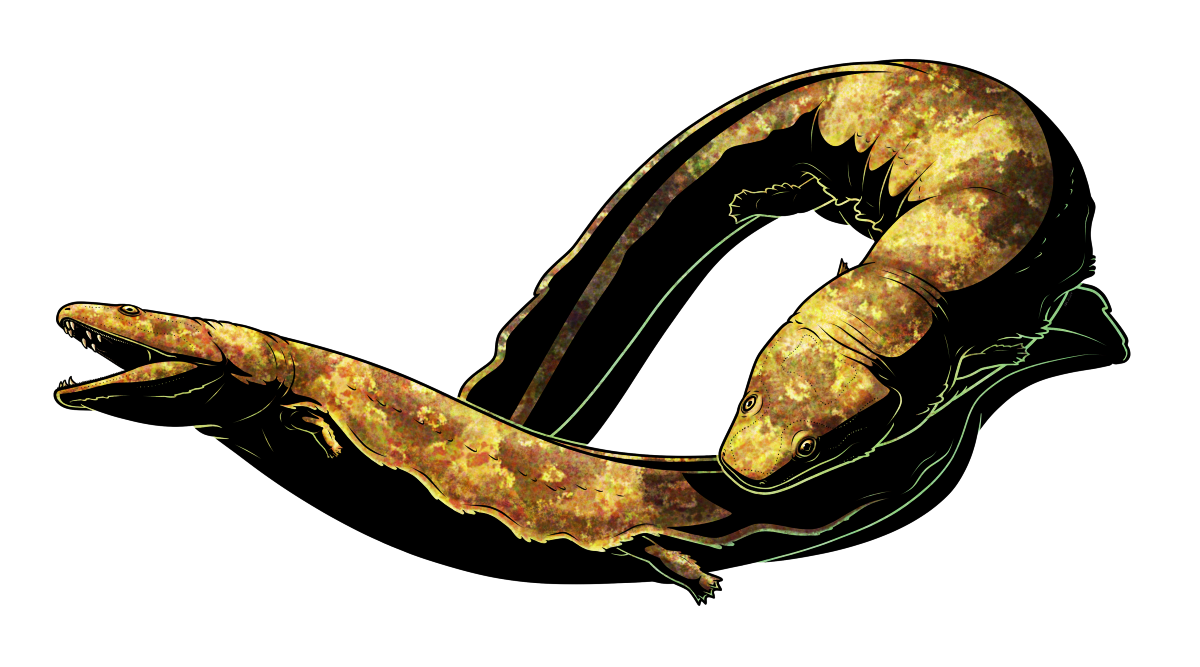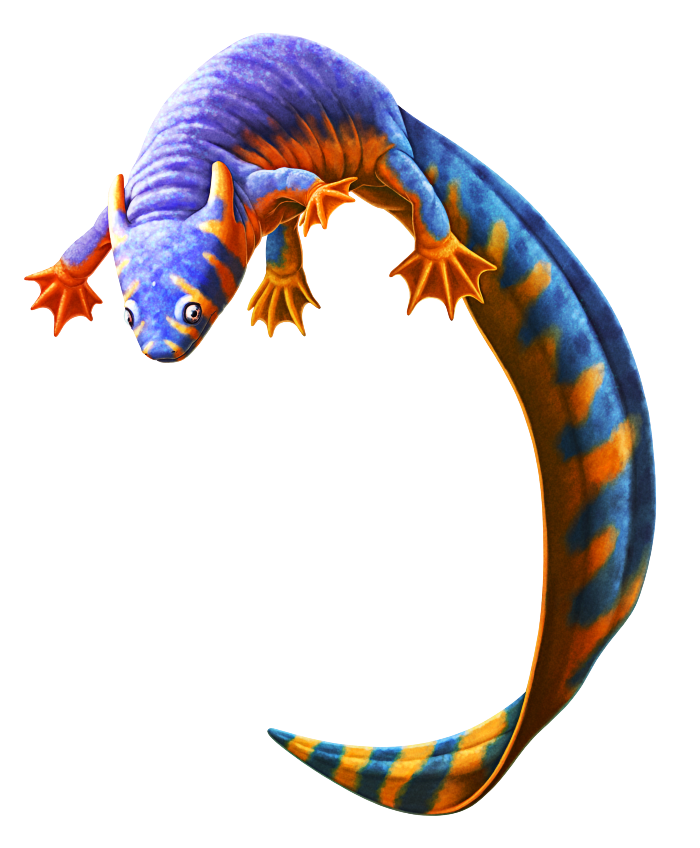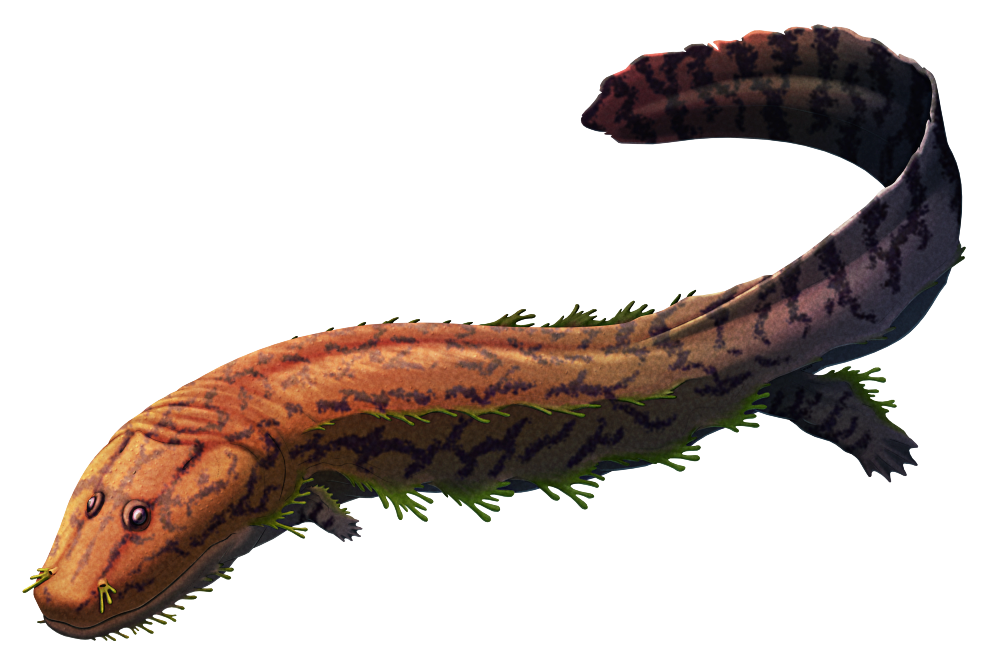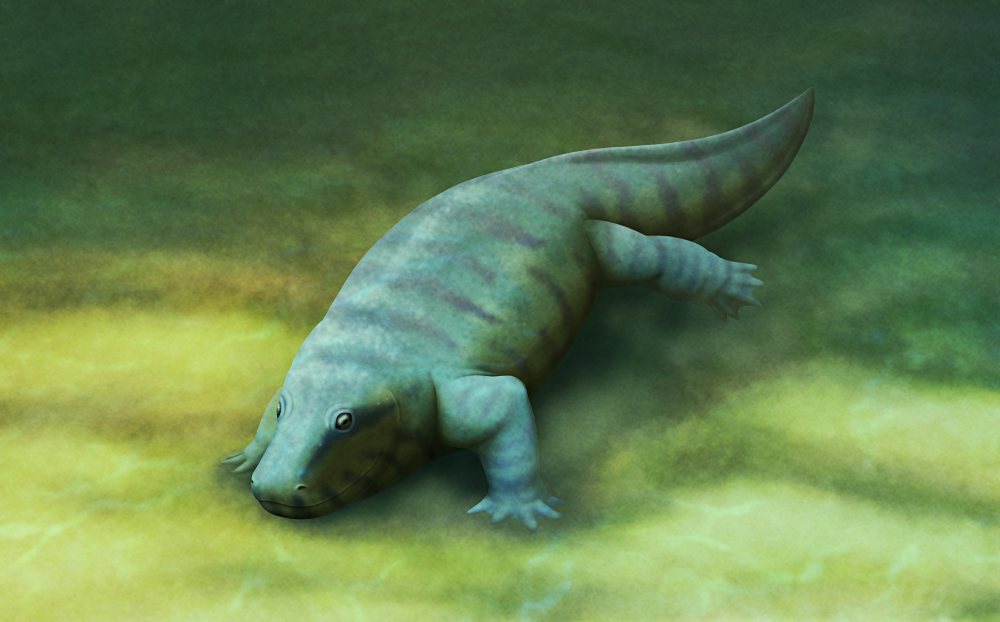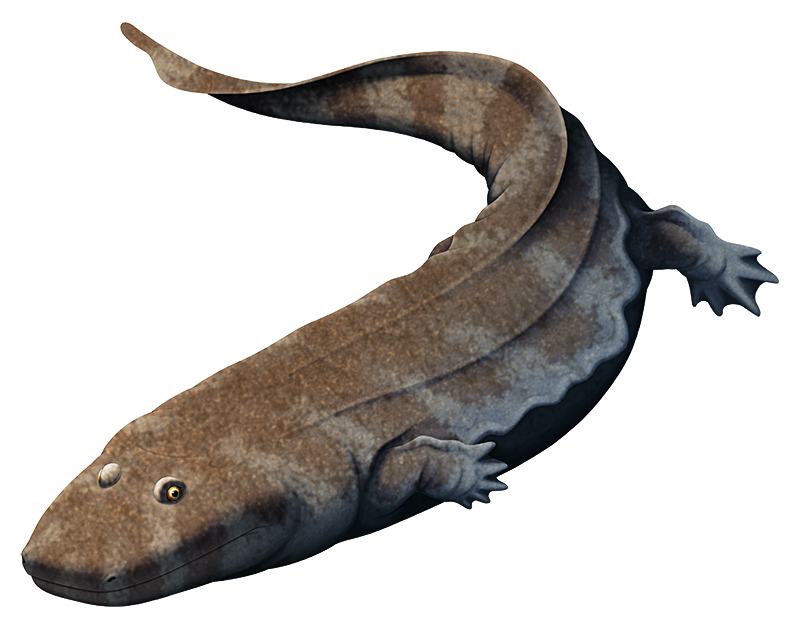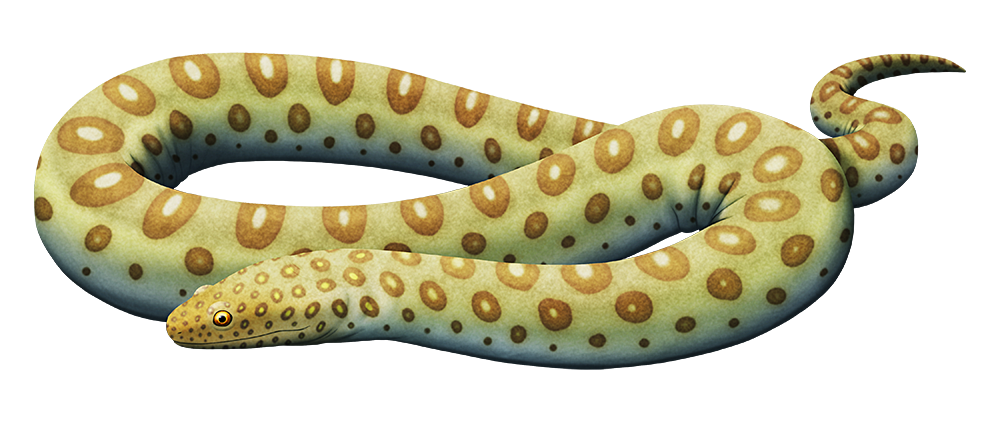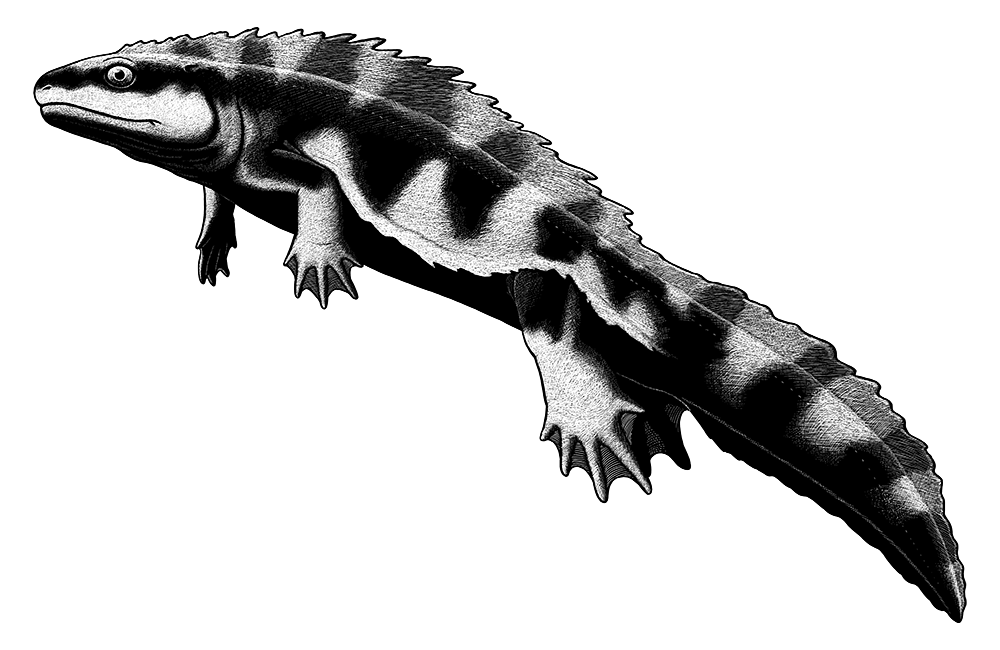Gaiasia jennyae was a tetrapodomorph – an amphibian-like relative of early tetrapods – that lived about 280 million years ago during the early Permian in what is now Namibia.
Although it’s only known from incomplete skull and vertebral column material it probably looked quite similar to the colosteids, a closely-related group of tetrapodomorphs with elongated bodies and small limbs. If it had the same sort of body proportions as these relatives it would have been huge, the largest known stem-tetrapod at potentially around 4m long (~13′).
It had a wide flat head with a short boxy snout, and large interlocking fangs on the roof of its mouth and at the front of its lower jaw. It would have been fully aquatic and probably not a particularly fast swimmer, instead likely being an ambush predator using suction from rapidly opening its jaws to pull prey into its mouth before clamping down with its fangs.
It’s also notable for living considerably later than most other stem-tetrapods, and in an unexpected part of the world. While its close relatives are all known from the tropics of the Carboniferous, Gaiasia was in a location that was much closer to the South Pole during the early Permian (~55° S), inhabiting an immense freshwater lake in a rift valley with a cold-temperate climate.
Its presence in this habitat may suggest that other stem-tetrapod lineages survived and thrived in high latitudes for much longer than previously thought, while the true tetrapods were all diversifying nearer the equator – or it might represent a Paleozoic equivalent of Koolasuchus, an isolated straggler lurking in a cold refugium.
Continue reading “Gaiasia”
